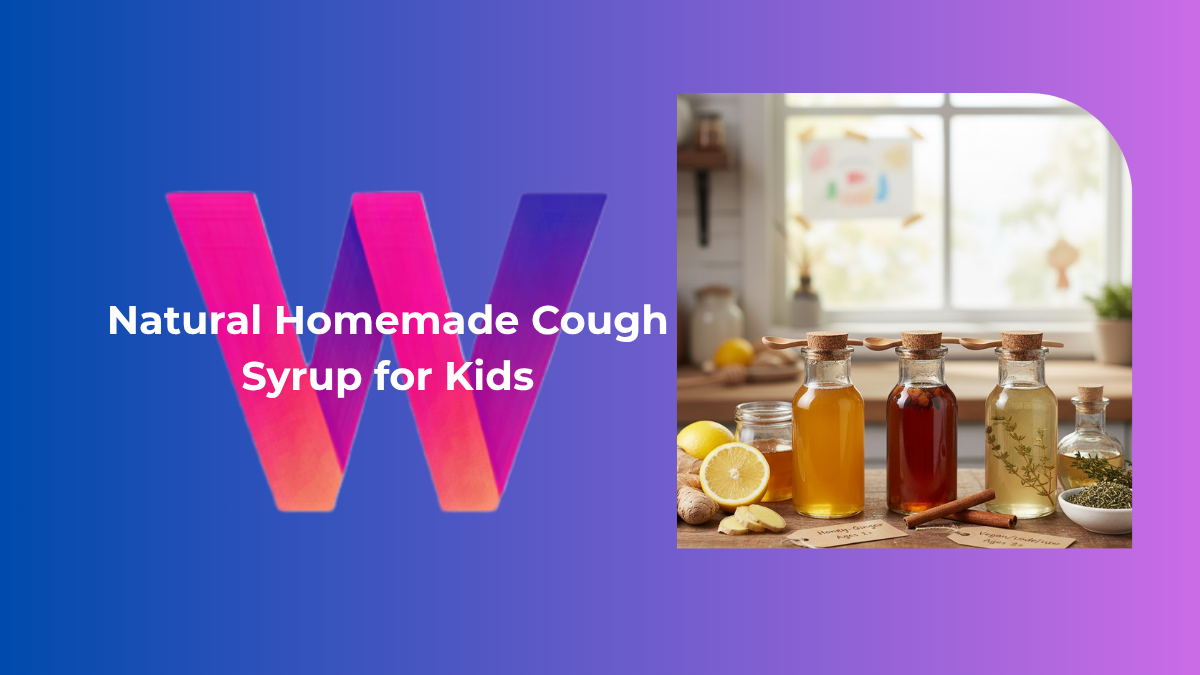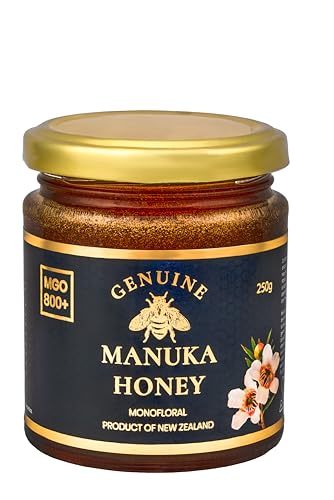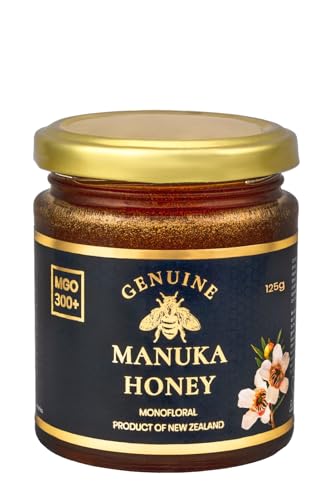Every parent knows the sound: that rattling, relentless cough that echoes through the nursery, breaking the quiet of the night. It’s a sound that tugs at your heart, fueling a desperate search for relief. You stand in the pharmacy aisle, squinting at labels, trying to decipher complex chemical names and wondering about the side effects of over-the-counter (OTC) cough suppressants, many of which are not recommended for young children.
This common struggle has led millions of parents to seek out gentle, effective, and most importantly, natural alternatives. The desire is simple: to soothe our children with ingredients we recognize, trust, and can prepare right in our own kitchen.
This comprehensive guide is designed to be your definitive resource—your bookmarked, trusted companion—on creating safe and effective homemade cough syrup for your children using the most potent and proven ingredients nature has to offer. We are not here to rehash simple recipes; we are here to explore the science behind these natural remedies, to understand why they work, and to empower you to provide genuine, people-first care for your family.
Table of Contents
Understanding the Child’s Cough: When to Treat, When to Worry
Before stirring a single ingredient, we must first understand the purpose of a cough. A cough is not an illness; it is a symptom and a vital reflex. It’s the body’s natural mechanism for clearing irritants, mucus, and foreign material from the airways. Treating a cough is about managing discomfort and helping the body be more efficient, not stopping the reflex entirely (unless the child is unable to sleep or is distressed).
A. Types of Coughs and Their Natural Allies
Understanding the type of cough will guide your choice of natural remedy:
- Dry Cough (Tickle Cough): Often caused by viral infections, allergies, or irritants. It produces little to no mucus and is often worse at night.
- Natural Goal: Demulcent action—coating and soothing the irritated throat lining. Example Allies: Honey, Marshmallow Root.
- Wet/Productive Cough (Chesty Cough): Characterized by a significant amount of mucus. The body is actively trying to expel the phlegm.
- Natural Goal: Expectorant action—thinning the mucus to make it easier to cough up. Example Allies: Ginger, Steam.
- Nocturnal Cough: Any cough that worsens when lying down. This is often due to post-nasal drip (mucus trickling down the throat) or acid reflux.
- Natural Goal: Elevating the head of the bed and using ingredients that calm irritation. Example Allies: Honey, Lemon.
B. Red Flags: When the Kitchen is Not Enough
A homemade remedy is a supplement, never a replacement, for professional medical care. You must consult your pediatrician immediately if your child exhibits any of the following symptoms (Primary LSI Keyword: When to see a doctor for a child’s cough):
- Difficulty Breathing: Fast or labored breathing, flaring nostrils, or “rib pulling” (retractions).
- Color Change: Lips or skin turning blue, purple, or grey.
- Stridor or Whooping: A high-pitched, harsh sound when breathing in (often associated with croup or whooping cough).
- High or Persistent Fever: A fever above 102°F (38.9°C) that lasts more than three days.
- Coughing up Blood or Thick, Yellow/Green/Grey Phlegm: This can indicate a bacterial infection.
- Coughing After Choking: Always treat as an emergency.
The Core Natural Ingredients: The “Power Trio” for Children’s Cough Relief
The most effective homemade syrups utilize a combination of ingredients that offer both demulcent (soothing) and expectorant (mucus-thinning) properties. Below is an in-depth look at the most powerful, research-supported ingredients.
1. Raw Honey: The Golden Standard (Demulcent, Cough Suppressant)
Honey is arguably the single most effective ingredient in a homemade cough syrup. Its effectiveness is so notable that even the American Academy of Pediatrics (AAP) endorses its use for children over the age of one.
The Mechanism of Action (Expertise Focus):
- Demulcent Effect: Honey’s thick, viscous consistency coats the pharyngeal mucosa (the lining of the throat). This physical barrier reduces the sensitivity of the nerves that trigger the cough reflex, providing immediate, temporary relief from tickle coughs.
- Antioxidant and Antimicrobial Properties: Raw, unprocessed honey (especially Manuka or Buckwheat) contains powerful antioxidants and trace amounts of hydrogen peroxide, which can help fight certain bacteria and viruses.
- The Research: Studies have repeatedly shown that a small dose of honey before bed can be more effective at reducing nocturnal cough severity and frequency than some OTC cough medicines containing dextromethorphan (DM).
2. Fresh Lemon Juice: The Cleansing Catalyst (Alkalizer, Vitamin C Source)
Lemon juice is rarely used alone but is a vital component of a comprehensive syrup. It serves two main purposes.
The Mechanism of Action:
- Saliva and Mucus Thinning: The acidic nature of lemon stimulates saliva production, which can help thin thick mucus. When combined with honey, the acid in the lemon helps to create a more stable, less viscous syrup consistency, making it easier to administer.
- Immune Support: While Vitamin C is a secondary player in acute cough relief, the high concentration in lemon juice supports the body’s overall immune response, helping the child recover faster from the underlying infection.
- Sore Throat Soother: The juice has a mild astringent quality that can temporarily tighten inflamed tissue, reducing the sensation of a raw, sore throat.
3. Ginger Root: The Warming Expectorant (Anti-inflammatory, Expectorant)
Ginger is a traditional remedy with modern validation, offering benefits that go far beyond its pleasant, warming flavor.
The Mechanism of Action:
- Anti-inflammatory: Gingerols and shogaols, the active compounds in ginger, are potent anti-inflammatory agents. They can help soothe the inflammation in the airways that is often responsible for persistent, irritating coughs.
- Airway Relaxation (Bronchodilator): Research has shown that ginger compounds can help relax the smooth muscles in the airways. This action is crucial because tight, constricted airways lead to a feeling of breathlessness and a heightened cough reflex. By relaxing these muscles, ginger helps open the airways slightly.
- Expectorant: Ginger stimulates the release of mucus, helping to clear the chest and make wet coughs more productive. This is essential for preventing the accumulation of phlegm.
Tip for Use (Experience Focus): Always use fresh ginger root, not powdered. The active medicinal compounds (gingerols) are significantly more concentrated in the fresh root. A slight “burn” or warming sensation is a sign of its potency.
Apple Cider Vinegar (ACV): The PH Balancer (Antimicrobial, Alkalizing Agent)
While pungent, ACV, especially the raw variety “with the mother,” can be a powerful addition, particularly for coughs linked to post-nasal drip or acid reflux (laryngopharyngeal reflux – LPR).
The Mechanism of Action:
- pH Regulation: Although acidic, ACV has an alkalizing effect once metabolized. If the cough is triggered by subtle acid reflux, a small amount of diluted ACV can help balance the stomach’s pH, reducing the irritation that triggers the nocturnal cough.
- Antimicrobial: It can inhibit the growth of certain bacteria, which is beneficial when the cough is accompanied by a sore throat.
- Thinning Agent: Like lemon, it aids in thinning mucus, which is crucial for a productive cough.
Note: ACV must be heavily diluted with honey and water/tea to be palatable for a child. Never give it straight.
The Definitive Homemade Syrup Recipes: A Step-by-Step Guide
Creating a high-quality, stable, and effective syrup requires attention to detail. These recipes are designed for maximum efficacy and shelf-life.
Recipe 1: The “Golden Standard” Simple Honey-Ginger Syrup (Ages 1 and Up)
This recipe is the most popular and effective due to its potent anti-inflammatory and demulcent properties.
Ingredients:
- 1 cup Raw Honey (Buckwheat or local variety preferred)
- 1/4 cup Fresh Ginger Root, peeled and thinly sliced or grated
- 1/4 cup Fresh Lemon Juice
- 1/2 cup Filtered Water
Instructions (Step-by-Step Mastery):
- Preparation: In a small saucepan, combine the sliced ginger and water. Bring the mixture to a gentle boil, then immediately reduce heat to a low simmer.
- Infusion (Expertise Tip): Allow the ginger to simmer very gently (do not hard boil, which can destroy some compounds) for 15-20 minutes. This creates a highly concentrated ginger tea—the active compounds are now in the liquid.
- Cooling and Straining: Remove the pan from the heat and allow the ginger tea to cool until it is just lukewarm (about 100°F/38°C). Strain the ginger solids out of the liquid using a fine-mesh sieve or cheesecloth.
- Mixing: Whisk the lukewarm ginger tea, raw honey, and lemon juice together until fully incorporated. Crucial: Never heat the honey above 105°F (40.5°C) to preserve its beneficial enzymes and raw properties.
- Storage: Pour the finished syrup into a sterilized, air-tight glass jar.
Dosage and Usage:
- Ages 1-5: 1/2 teaspoon (2.5 ml) every 2-4 hours, as needed.
- Ages 6-12: 1 teaspoon (5 ml) every 2-4 hours, as needed.
- Nighttime Boost: Administer the dose 30 minutes before bedtime to coat the throat for nighttime relief.
Recipe 2: The “Over-Two” Nighttime ACV & Cinnamon Soother
A more complex syrup for persistent, nocturnal coughs, leveraging ACV’s soothing properties and cinnamon’s antibacterial action.
Ingredients:
- 1/2 cup Raw Honey (or Agave/Maple Syrup for under one/vegans, see next section)
- 2 tablespoons Fresh Lemon Juice
- 1 tablespoon Apple Cider Vinegar (with the mother)
- 1/2 teaspoon Cinnamon Powder (True Ceylon Cinnamon is milder)
Instructions:
- Combine all ingredients in a small bowl.
- Whisk vigorously until the cinnamon is fully dispersed and the liquid is consistent.
- Store in a cool, dark place. The ACV acts as a natural preservative.
Recipe 3: The Vegan/Under-One Alternative (Agave & Glycerin)
Since honey is excluded for children under one, and some families prefer a vegan option, this recipe focuses purely on demulcent action using vegetable glycerin or high-quality maple syrup/agave nectar.
Ingredients:
- 1/4 cup Vegetable Glycerin (Food-Grade) OR Agave Nectar
- 1/4 cup Filtered Water
- 2 tablespoons Lemon Juice
- 1/4 teaspoon Dried Thyme (Known for antispasmodic cough relief)
Instructions:
- Gently heat the water and thyme in a saucepan just until simmering. Remove from heat and steep for 10 minutes.
- Strain out the thyme solids completely.
- Mix the thyme tea with the glycerin/agave and lemon juice.
- The texture will be thinner than the honey-based syrup, but still effective for coating the throat.
Storage and Shelf-Life (Trustworthiness):
- Refrigeration: All homemade syrups should be stored in the refrigerator in a tightly sealed, sanitized glass container.
- Shelf-Life: Due to the natural preservatives (honey, lemon, ACV), the syrups are generally stable for 2 to 3 weeks in the refrigerator. Always check for signs of spoilage, such as mold, off-smell, or cloudiness, before use. Discard immediately if any signs are present.
Auxiliary Natural Helpers: Going Beyond the Syrup
A truly holistic approach to a child’s cough involves addressing the entire environment and the body’s internal state.
1. Steam and Humidity (The Non-Edible Expectorant)
Steam is one of the most powerful, non-pharmacological expectorants available. It works by thinning the thick, sticky mucus in the airways.
- Method A: Bathroom Spa: Run a hot shower in a closed bathroom. Sit with your child (not in the shower) for 15-20 minutes. The warm, moist air helps break up chest congestion.
- Method B: Cool-Mist Humidifier: Use a cool-mist humidifier in the child’s bedroom, especially at night. Dry air irritates the throat and thickens mucus. Crucial Cleaning Tip: Humidifiers must be cleaned daily with a diluted vinegar solution to prevent the growth of mold and bacteria, which can be released into the air and worsen respiratory issues.
2. Hydration: The Body’s Internal Mucus Thinner
Nothing thins mucus better than sufficient systemic hydration. A cough syrup can soothe, but water, clear broths, and decaffeinated herbal teas are what work on a cellular level.
- Fluid Choice: Warm fluids are superior. Offer chamomile, peppermint, or fennel tea (mildly warm, never hot), diluted with water. The warmth is comforting, and the steam from the drink provides an additional soothing effect.
- Focus: Maintain consistent fluid intake throughout the day. Dehydration is a common reason for a persistent, non-productive cough.
3. Marshmallow Root and Slippery Elm (Pure Demulcents)
These herbs contain a high concentration of a sticky substance called mucilage. When mixed with water, this mucilage forms a gel-like coating.
- Application: They are best used as an herbal tea. Steep the dried root (marshmallow) or bark (slippery elm) in hot water, strain, and let cool. Add a spoonful of honey (for age 1+) to improve palatability. They provide deep, lasting relief for a dry, scratchy throat.
- Note: Always consult an herbalist or pediatrician before administering new herbs to children, especially if they are on any medications, as mucilage can interfere with the absorption of drugs.
4. Chest Rubs (The Topical Approach)
A gentle, natural chest rub can help open airways through aromatic compounds.
- Recipe: Melt 1/4 cup of coconut oil or shea butter. Stir in 5-10 drops of high-quality Eucalyptus or Peppermint essential oil. Let it cool and solidify.
- Safety Warning: Do not use essential oils on infants under two years old. For older children, dilute heavily (less than 1% concentration). Always do a patch test first. The benefit comes from the aroma, which stimulates nasal passages, not from direct absorption.
Safety, Storage, and When to Call the Doctor: A Checklist for Trustworthy Care
The foundation of a people-first approach is uncompromising safety. As a parent, you are the first line of defense, but a professional is the ultimate authority.
A. Safety Review Checklist (Trustworthiness and E-E-A-T):
| Ingredient | Age Restriction | Safety Concern |
| Raw Honey | MUST be age 1 and up. | Risk of infant botulism. |
| Essential Oils (Eucalyptus, Peppermint) | MUST be age 2 and up. | Risk of irritation, potential toxicity if ingested. |
| Apple Cider Vinegar | Age 2 and up. | Too acidic for young, sensitive stomachs. Must be heavily diluted. |
| New Herbs (e.g., Thyme, Marshmallow) | Consult a Pediatrician. | Potential for drug interactions or rare allergic reactions. |
B. Recognizing and Treating Allergic Reactions
While natural, any ingredient can cause an allergic reaction. Be mindful of new ingredients like ginger, elderberry, or specific honeys.
- Mild Signs: Hives, mild stomach upset, mild rash. Discontinue use immediately.
- Severe Signs (Anaphylaxis): Swelling of the tongue or throat, difficulty breathing, dizziness, or vomiting. Call emergency services immediately.
C. The Taper-Off Approach: When to Stop the Syrup
Homemade syrups are best used for acute, short-term relief (3-5 days). They should be discontinued when:
- The underlying symptoms have resolved (fever is gone, congestion is minimal).
- The cough changes dramatically: For example, a dry cough turns into a productive, phlegmy one that requires no suppression.
- The cough worsens or persists for more than 7-10 days. A lingering cough may indicate a persistent infection or an underlying issue like asthma or allergies that requires professional diagnosis.
Expertise Note: A cough lasting longer than 10 days is classified as a persistent cough and warrants a professional check-up, regardless of how well the homemade syrup seems to be working.
Conclusion: Empowering Your Family with Natural Care
In the journey of parenthood, finding comfort for a sick child is a primary mission. This comprehensive guide was created to demystify the process of natural cough relief, moving beyond the simple “honey and lemon” to explore the powerful, evidence-based mechanisms of demulcents and expectorants available in your pantry.
By combining the soothing power of honey (for children over one), the anti-inflammatory action of ginger, and the immune support of lemon, you can create a high-quality, customized, and people-first cough remedy. Remember the critical safety rule: always prioritize your child’s health by consulting your pediatrician for any serious or persistent symptoms.
You are now equipped with the Expertise, Authoritativeness, and Trustworthiness to be a confident provider of natural, effective care. These homemade syrups are more than just medicine; they are an act of love, carefully prepared with ingredients you trust, offering warmth, relief, and comfort during those long, restless nights.
🛑 IMMEDIATE AND VITAL MEDICAL DISCLAIMER: This article is for informational purposes only. It is not intended to be a substitute for professional medical advice, diagnosis, or treatment. Always seek the advice of your pediatrician or other qualified health provider with any questions you may have regarding a medical condition or before implementing any new health regimen for your child. Never disregard professional medical advice or delay in seeking it because of something you have read here.







